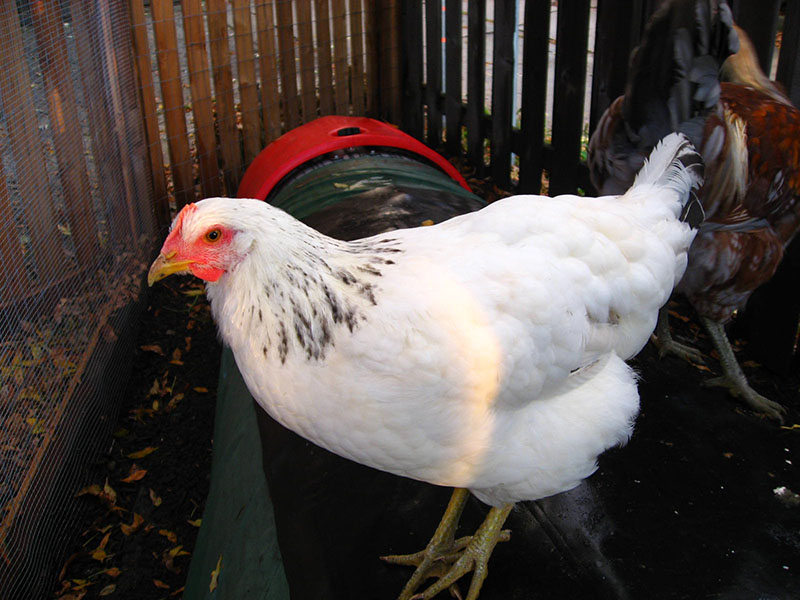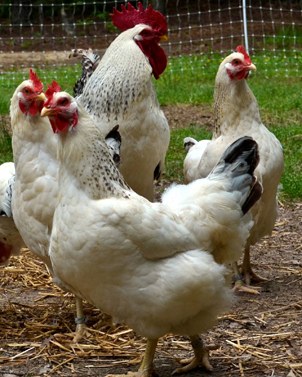Delware Chickens
T he Delaware, once named Indian Rivers, was developed in the United States. The fowl
is a cross between a Plymouth Rock and a New Hampshire. It was created by George Ellis
around the 1940’s. Its purpose was for broiler production but has since been decreasing
with low number in this birds population, which is considered threatened.
he Delaware, once named Indian Rivers, was developed in the United States. The fowl
is a cross between a Plymouth Rock and a New Hampshire. It was created by George Ellis
around the 1940’s. Its purpose was for broiler production but has since been decreasing
with low number in this birds population, which is considered threatened.
Characteristics
The Delaware is a white bird with black barred plumage near the neck area. The tail feathers are also black barred. The fowl has a single red comb and red wattle and earlobes. The shanks are yellow and the skin is white. Since the feathers are white the skin is unblemished. Hens tend to go broody on occasion. The posses a gentle disposition and are not known to be aggressive. The Delaware feathers fast in chicks and builds up a fattened meaty body rapidly.
Standard Weights
 Cock: 8.5 lbs
Cock: 8.5 lbs
Hen: 6.5 lbs
Bantam Cock: 34 oz
Bantam Hen: 30 oz
Varieties
None (According to the APA)
Egg Shell Color
Dark brown.
Uses
The Delaware is primarily used for eggs and meat. This fowl lays around 100 to 150 eggs per year, depending on certain conditions such as food supply and weather.
References
Chicken Breeds and Varieties (A2880), John L. Skinner, University of Wisconsin-Madison
"Delaware Chicken." The Livestock Conservancy. The Livestock Conservancy, n.d. Web. 24 June 2015.
Ekarius, Carol. "Chickens: Delaware." Pocketful of Poultry: Chickens, Ducks, Geese, Turkeys. North Adams, MA: Storey Pub., 2007. 62-63. Print.
Lewis, Celia. "Breed Profiles: Delaware." The Illustrated Guide to Chickens: How to Choose Them, How to Keep Them. New York: Skyhorse Pub., 2011. 80. Print.
